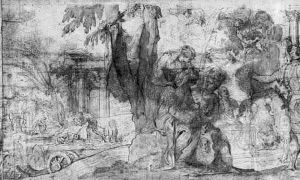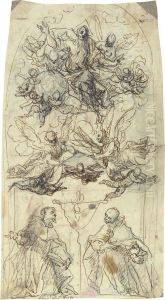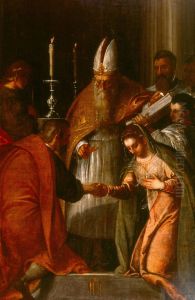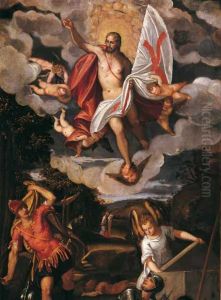Luigi Benfatto Paintings
Luigi Benfatto, also known as Alvise dal Friso, was an Italian painter who was born in 1551 in Verona, Italy, and died in 1611 in Venice. He belonged to the late Renaissance period, often referred to as Mannerism, which was characterized by elongated forms and often complex composition. Luigi was a member of a family of painters, which included his well-known brother, Agostino Carracci, and his cousin, Ludovico Carracci, both of whom had significant influences on his work.
Luigi started his artistic training under the guidance of his father, Antonio Benfatto, who was a lesser-known painter of the time. He later moved to Venice, where he continued his education and began to establish himself as an artist. In Venice, he was influenced by the works of Paolo Veronese and Jacopo Tintoretto, who were prominent figures of the Venetian school of painting. The rich colors, dramatic light, and theatrical settings that characterized Venetian paintings became elements that Luigi incorporated into his own style.
During his career, Benfatto worked on various religious and secular commissions. His works were characterized by a strong sense of composition, clarity of form, and a subtle use of color. He was adept at frescoes as well as oil paintings, and he executed works for many churches and public buildings in Venice and its territories. Some of his notable works include frescoes in the Palazzo Ducale in Venice and contributions to the decoration of the Scuola Grande di San Rocco, where he worked alongside other famous artists of his time.
Despite Luigi Benfatto's contributions to the Venetian art scene, his fame was somewhat overshadowed by the towering reputations of his brother and cousin, as well as other Venetian contemporaries. Nonetheless, his work is recognized for its refinement and adherence to the stylistic traits of the Venetian tradition. Today, his paintings can be found in various museums and collections, reflecting the enduring appreciation for the art of the late Renaissance period.



